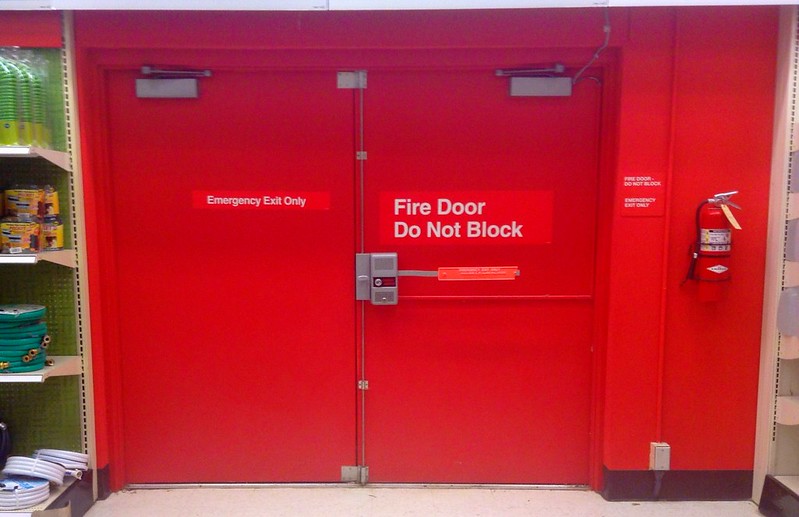In simple words, fire door hardware is a door that is fire resistant. It includes all the present elements in the door, such as locks, door closers, panic bars, handles, hinges, etc.
The intention behind these fittings is to keep the door shut to avoid transmission of smoke and gas and keep the flares away from entering, subsequently stay away from inflammation on the door that is not exposed to fire.

Top 6 fire door Myths
1. Painting A Door with Fire-Resistant Paint Makes It A Fire-Resistant Door
False:
This would not be perceived as a fire-resistant door by BWF (British Woodwork Foundation), the leading authority on fire door safety. A door consists of numerous compatible and fire-proof materials and parts; all recorded on the fire door certified.
2. If an Individual Is Leasing A Property, It Is His/Her Obligation to Be Aware of Fire Doors.
False:
The property manager and the ‘capable individual’ under the Fire Safety Order. The landlord must guarantee fire security for the tenants who stay in the building.
Fire Door Safety Week research presents that 59% of occupants in the flats in the UK do not have the ‘Responsible Person’ for the building that they own.
If the property manager does not have the information or abilities, they should invite a ‘competent individual’ to support the property manager.
Read Also:
3. An Individual Should Not Place Any Goods Before the Fire Door, Regardless of Whether They Are Light and Simple to Move
True:
Individuals do not have any obstruction before a fire door. Ensure that individuals or the tenants are aware of the pathway to get out in case of a fire accident.
Flames and smoke could keep an individual from seeing individuals present in front of him/her. Recent studies did show that 74% of merchants had seen a hindered or blocked fire door.
4. Myth: The Space Between the Fire Door and The Door Frame Does Not Make Any Difference
False:
The space around the door is vital to prevent the section of harmful exhaust and smoke in a fire. Recent studies discovered that 34% of fire doors fitted had extreme space (over 3mm).
On the fire door with smoke seals, this space will be 3mm – a similar thickness as a £1 coin – however, consistently check the fire door certification.
The space under the entryway can be somewhat bigger (maximum of 8mm), yet it relies upon the door. Ideally, an individual should not see the light under the door.
5. Myth: Individual Can Discover Everything That They Require to Think About the Fire Door That Was Fitted
True:
Every fire door should have a current freely certified test certification. This demonstrates the door’s fire rating, test rules, and assembling consistency.
It additionally sees that the door’s parts meet predicted performance and compliance standards.
It likewise gives basic data about the installation. Search for a mark or fitting on top of the door. Without a certificate mark, an individual can not be confident that the door is a fire door.
6. Myth: Any Lock That Is Present in The Market Can Be Fitted onto A Fire Door Hardware Since It Is Made of Metal, And Metal Does Not Get Dominated by Fire
False:
The lock should get tested and BWF fire certified. Metal gets very hot in case of a fire, and it can rapidly go from being the most grounded component of your door to the most fragile.
The extra fitting of intumescent protection can give at least 30 mins fire assurance.
Author Bio:
Ester Adams is a farmer of words in the field of creativity. She is an experienced independent content writer with a demonstrated history of working in the writing and editing industry. She is a multi-niche content chef who loves cooking new things.









